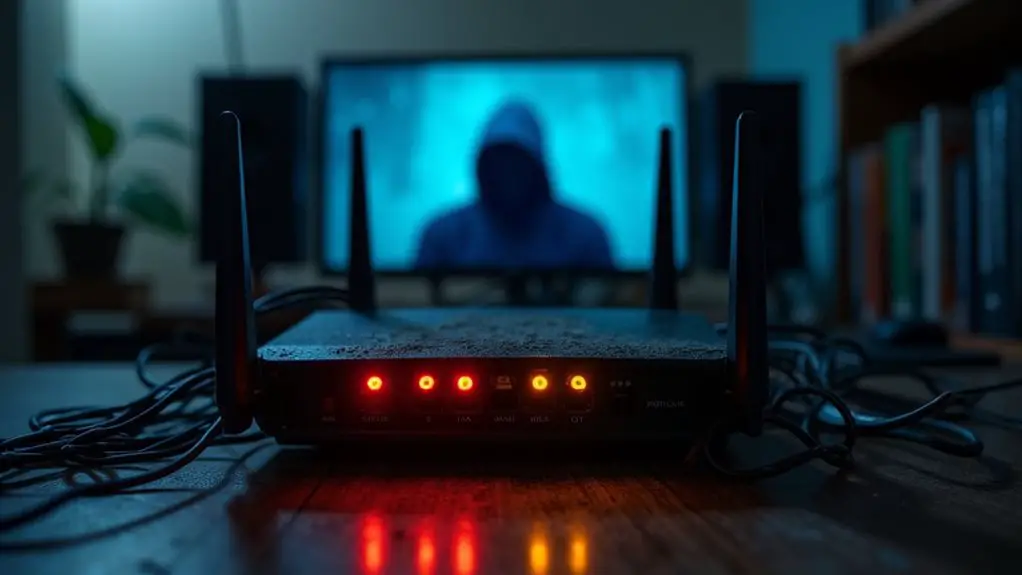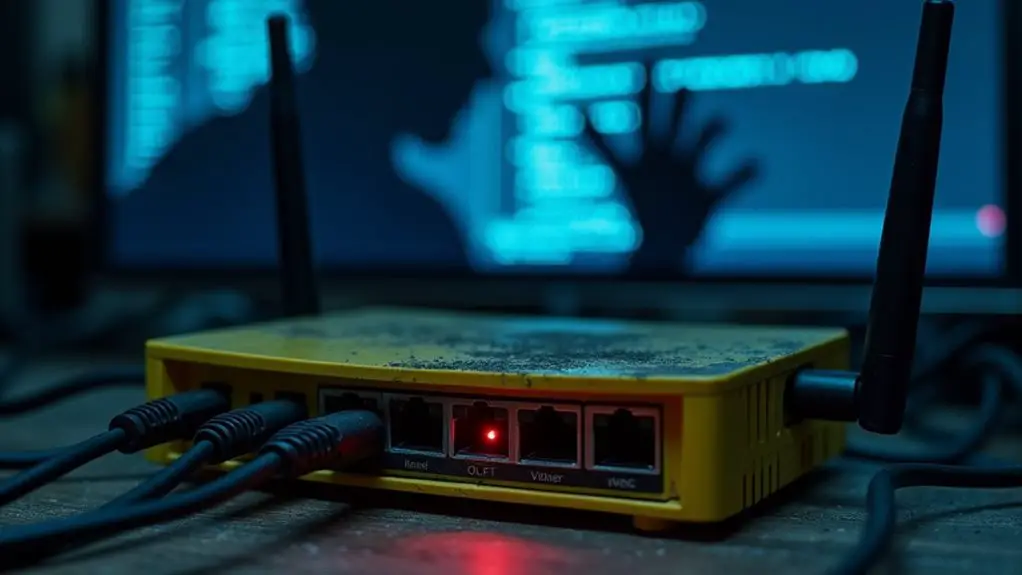The FBI warns that your outdated router might be secretly supporting criminal activities without your knowledge. End-of-life routers contain unpatched security vulnerabilities that cybercriminals actively exploit using malware like “TheMoon.” Once compromised, these devices can become part of proxy networks that facilitate fraud, identity theft, and coordinated attacks. You should replace EOL routers with newer models or disable remote management features. A simple router reboot provides temporary relief, but permanent solutions require more thorough measures.

While most people regularly update their computers and smartphones, outdated routers often remain neglected in homes and offices across the country. This oversight could be putting your digital security at serious risk, according to recent FBI warnings about end-of-life (EOL) routers.
The FBI has issued formal alerts highlighting the dangers of using routers that no longer receive security updates from manufacturers. These obsolete devices create significant vulnerabilities in your network, as they contain unpatched security flaws that cybercriminals actively exploit.
Outdated routers harbor unpatched security flaws, creating network vulnerabilities that cybercriminals actively target and exploit.
Your outdated router might become part of a criminal enterprise without your knowledge. Threat actors target devices from vendors like Cisco Linksys and Ericsson Cradlepoint, installing malware families such as “TheMoon” that give them complete control over your network equipment. The malware was first detected in 2014 but continues to pose a significant threat due to widespread router vulnerabilities.
The remote management features, often enabled by default on many routers, serve as common entry points for attackers. These functions allow cybercriminals to bypass authentication processes and gain unauthorized access to your network infrastructure.
Once compromised, your router can be transformed into a proxy service that hides criminal activities. Services like Anyproxy and 5Socks, built using networks of infected routers, help cybercriminals conceal their true locations while conducting illegal operations.
These router-based proxy networks facilitate various cybercrimes, including fraud, identity theft, and coordinated attacks against other systems. Your device could be secretly contributing to these criminal campaigns while you remain unaware of the breach.
To protect yourself, the FBI strongly recommends replacing any EOL router with a newer model that receives regular security updates. If you must continue using an older router, disable remote administration immediately to reduce the attack surface. A simple router reboot can temporarily disrupt malware operations, though this is not a permanent solution.
The impact extends beyond your personal security. Compromised routers create weak points in the broader digital infrastructure, allowing criminals to build powerful botnets capable of launching large-scale cyberattacks.
Frequently Asked Questions
How Do I Check if My Router Is Vulnerable?
To check if your router is vulnerable, first use port scanning tools like Shields Up or the Fing app to identify open ports.
Change default passwords immediately, as this is a common security weakness.
Run firmware updates to patch known vulnerabilities.
Disable unnecessary services such as UPnP and HNAP protocol if you don’t need them.
Finally, use specialized tools like Nmap to perform thorough scans that can detect potential security weaknesses in your router’s configuration.
What Specific Malware Threats Target Outdated Routers?
Your outdated router faces several specific malware threats.
TheMoon, active since 2014, exploits router vulnerabilities to enable remote control without passwords.
5Socks and Anyproxy transform end-of-life routers into proxy networks that conceal hackers’ identities during operations.
These threats target vulnerable models by scanning for open ports and exploiting remote administration weaknesses.
Once compromised, your router can be incorporated into botnets and used for anonymous cybercrimes, including fraud and cryptocurrency theft.
Can Criminals Access My Personal Data Through My Router?
Yes, criminals can access your personal data through your router. When your router has unpatched vulnerabilities, hackers can bypass authentication and gain unauthorized access to your network.
This gives them potential visibility into your browsing history, passwords, and sensitive information transmitted across your network.
Your router serves as the gateway to all your connected devices.
Regular firmware updates, changing default credentials, and enabling encryption are essential protective measures that greatly reduce your risk of data exposure.
How Often Should I Update My Router’s Firmware?
You should check for router firmware updates every 2-3 months.
Many modern routers offer automatic updates, which you should enable if available. For routers without this feature, perform manual checks through your router’s admin panel.
Regular updates patch security vulnerabilities and improve performance. Manufacturers typically release updates to address newly discovered security threats or add functionality.
Setting a calendar reminder can help you maintain this important maintenance routine and keep your home network secure.
What Security Features Should I Enable on My Router?
To secure your router effectively, enable these critical features: WPA3 encryption (or WPA2-AES if WPA3 isn’t available), Protected Management Frames to prevent deauthentication attacks, and a guest network for visitors.
Activate your firewall with both inbound and outbound rules, and implement network segmentation to isolate IoT devices.
Enable automatic firmware updates, disable unused services like remote access, and change all default credentials.
Consider using VPN compatibility for additional privacy protection.





